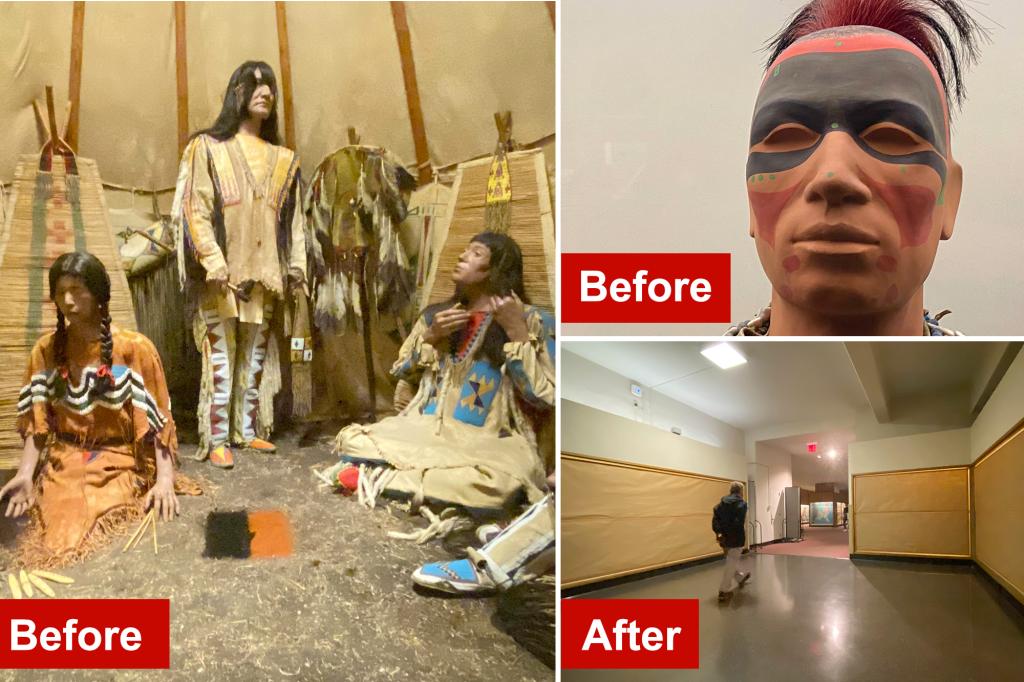The American Museum of Natural History closed its Native American exhibits, which displayed artifacts from its collections, to comply with new federal regulations regarding repatriation. The exhibits included items like spears, tools, and mannequins, which had been displayed for 57 years. The new rules require museums to provide inventories of their artifacts and consult with native groups to return objects, including human remains. Despite being the largest source of Native American remains and objects, the museum has not provided any information to tribal groups about what they hold.
Native American groups have accused the American Museum of Natural History of stonewalling over the repatriation of precious objects, including human remains and funerary objects. The museum has human remains and funerary objects in storage, some of which may have been acquired through looting sacred burial sites. Despite acknowledging the need to consult with 574 federally recognized tribes, as well as state-recognized tribes and bands, the museum has not taken any steps to return objects or provide information to tribal groups.
The museum, along with institutions like Harvard University, the Metropolitan Museum of Art, and Chicago’s Field Museum, have been slow to act on repatriation efforts. Native American groups, including the Northern Arapaho and Cheyenne-Arapaho Tribes, have been waiting for updated inventories from the museum. Frustration is mounting as tribal groups are trying to engage in consultations required by the new rules, but are facing resistance from the museum. Despite efforts to reach out for information, the museum has failed to respond promptly.
The new director of the American Museum of Natural History, Sean Decatur, has been seen as a potential catalyst for change in the repatriation process. Decatur, who took over from longtime president Ellen Futter, has acknowledged the need to respect the values and perspectives of Indigenous peoples. However, the museum continues to face criticism for its handling of the repatriation process. Tribal groups are hopeful that under Decatur’s leadership, progress can be made in returning sacred objects and human remains to their rightful owners.
The repatriation process, which began in 1990 with the passage of the Native American Graves Protection and Repatriation Act, has been slow and fraught with challenges. The new rules set forth by the US Department of the Interior aim to speed up the process and hold institutions accountable for returning Native American items. Despite calls for action from tribal groups and government officials, museums like the American Museum of Natural History have been criticized for their lack of progress in repatriation efforts.
The American Museum of Natural History has not provided any updates on its progress in repatriating Native American objects since closing its exhibits in January. Despite acknowledging the need to consult with Native American groups and return sacred objects and human remains, the museum has failed to take the necessary steps to move the process forward. The last recorded repatriation in 2021 to the Tohono O’odham Nation highlights the importance of returning items to tribal nations to uphold respect for Indigenous cultures.


